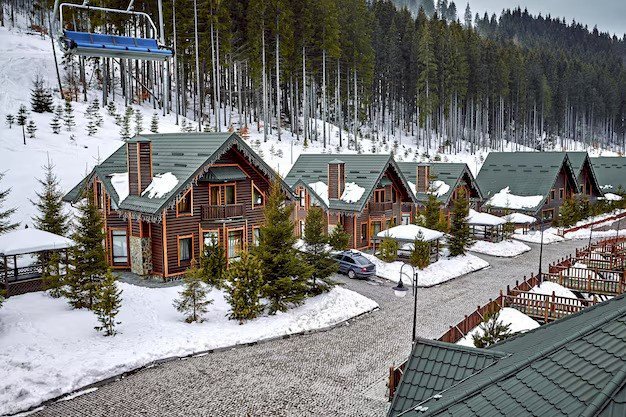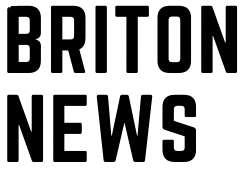How to Start a Cabin Rental Business in 2025 – Step-by-Step Beginner’s Guide
Learn how to start a cabin rental business in 2025 with this easy step-by-step guide. Discover costs, tools, marketing tips, legal steps, and how to boost your bookings.

In 2025, cabin rentals are booming as travelers look for peaceful getaways close to nature. Whether it's a forest retreat or a lakeside escape, cabins are now a top choice for short-term stays. If you’re thinking about turning a piece of land into a money-making vacation spot, this guide is for you. We’ll walk you through the complete process—from research and setup to marketing and operations.
What Is a Cabin Rental Business?

A cabin rental business involves owning and renting out small lodging units—typically located in scenic or rural areas—for short-term stays. Unlike traditional hotels or urban apartments, cabins are popular for their cozy atmosphere and connection to nature. Most owners list these properties on platforms like Airbnb or Vrbo, earning income by charging nightly or weekly rates. Cabins can be luxury retreats, eco-pods, tiny homes, or simple log structures, depending on your style and budget.
Quick Takeaways:
-
Cabins are self-contained units often in nature-filled destinations
-
Flexible design: from rustic to luxury, solo to group stays
-
Guests: couples, families, digital nomads, adventure travelers
-
Most bookings are for 2–5 nights, but extended stays are rising due to remote work
-
Common features include outdoor decks, firepits, local maps, and smart locks
Is a Cabin Rental Business Profitable in 2025?

Yes—when set up properly, cabin rentals can be highly profitable in 2025. With travelers increasingly choosing nature escapes over big hotels, the demand for cabins is rising. Platforms like Airbnb show that well-located, well-maintained cabins can earn $30,000 to $60,000 per year or more, depending on location, quality, and occupancy rates. Startup costs are relatively low compared to commercial properties, and operating expenses are manageable, especially for those starting with one or two units.
Profit Potential in 2025:
-
Average nightly rate: $120–$250
-
Booking potential: 15–25 nights per month
-
Market trend: +9.2% annual growth in cabin-style rentals globally
-
Peak season weekends can command rates over $300/night in high-demand areas
-
Repeat guest rates are increasing due to personalized guest experiences and loyalty discounts
Why 2025 Is the Perfect Year to Start

-
Travelers now seek peaceful, off-grid escapes more than ever
-
Short-term rentals are one of the top investment trends this year
-
Cabins offer high ROI with lower maintenance than urban rentals
-
New zoning policies in many states make rural short-term rentals easier to launch
-
Prefab cabin kits and modular homes are more affordable and accessible in 2025
Step 1: Why Market Research Matters

Understanding demand before you build is key. Market research helps you avoid costly mistakes by targeting areas with high traveler interest and low competition. It also gives insight into guest preferences so you can create a more attractive rental.
Tips:
-
Use tools like AirDNA, Mashvisor, or AllTheRooms for rental demand and competition insights
-
Trending cabin locations in 2025: Lake Tahoe, Blue Ridge, Smoky Mountains
-
Smart tip: Study 3-star reviews for clues on what to improve
-
Check seasonal trends—some areas see double bookings in summer but drop in winter
-
Research state and county zoning laws during location scouting
Step 2: Plan for Profit, Not Just Passion

A smart business plan ensures your cabin venture is financially viable from day one. It includes budgeting, pricing, revenue forecasting, and management decisions.
Estimated Costs:
-
Land purchase: $15,000–$60,000
-
Cabin build (prefab or custom): $30,000–$150,000
-
Furnishings and decor: $5,000–$10,000
-
Permits, insurance, legal: $2,000–$5,000
-
Marketing and listing setup: $500–$1,000
-
Emergency repair fund: $1,000–$3,000 recommended
Tips:
-
Break-even point = monthly expenses ÷ average nightly rate x occupancy
-
Include off-season revenue strategies (e.g., remote work offers)
-
Planning tool: BPlans.com
-
Create multiple pricing tiers (weekday vs. weekend, seasonal)
Step 3: Stay Legal and Insured

Navigating permits and insurance may not be exciting—but it's essential. Without the right paperwork, your cabin could be shut down or fined. This step protects both your business and your guests.
Legal Checklist:
-
Business registration (LLC or sole proprietorship)
-
Short-term rental permit or license
-
Transient Occupancy Tax (TOT) registration if applicable
-
General liability and property insurance
-
Fire inspection and zoning clearance
-
Check for HOA restrictions if property is in a managed development
Read Also: How to Start an Air Duct Cleaning Business in 2025
Step 4: Build a Cabin Guests Will Love

Design isn't just about looks—it directly affects guest experience and reviews. Create a space that’s functional, comfortable, and memorable.
Tips:
-
Must-have features: smart lock, kitchenette, comfy bed, Wi-Fi
-
Eco add-ons: solar panels, rainwater catchment, compost toilets
-
Design for Instagram: deck views, hammocks, woodsy interiors
-
Add local art or a welcome board for a personalized touch
-
Keep it quiet—use sound insulation and window treatments
Step 5: Attract Bookings with Better Listings

Your online listing is your first impression. High-quality images, clear descriptions, and smart pricing make a big difference in conversion rates.
Tips:
-
Use natural light + wide-angle lens for great photos
-
Pro tip: Sell the escape experience, not just the cabin
-
Use pricing tools like PriceLabs, Wheelhouse, or Beyond Pricing
-
Add a professional floorplan sketch or cabin layout
-
Mention proximity to key attractions, trails, and scenic spots
Step 6: Spread the Word and Get Booked

Great listings still need visibility. Use modern marketing tools and visual storytelling to promote your cabin and drive repeat guests.
Tips:
-
SEO tip: List on Google My Business + add keywords to titles
-
Great platforms: Instagram Reels, Pinterest pins, YouTube Shorts
-
Try discounts for referrals and repeat guests
-
Reach out to local travel blogs or influencers for guest posts or reviews
-
Create a local guidebook PDF or printed version with custom branding
Step 7: Keep Operations Smooth and Guests Happy

A well-run cabin leads to good reviews and repeat business. Smart systems and local support keep your business running even when you're away.
Tips:
-
Tools like Lodgify, Smoobu, OwnerRez save hours weekly
-
Welcome kit = snacks, guidebook, Wi-Fi code, emergency contact
-
Keep 2x stock of towels, linens, and toiletries
-
Consider a part-time local cleaner or co-host for emergencies
-
Automate review requests and thank-you notes after checkout
Avoid These Rookie Mistakes

Even great cabins fail when key details are missed. Know the common pitfalls so you don’t lose time, money, or guest trust.
Watch Out For:
-
Common fail: Renting without zoning approval or permits
-
Most complaints are about unclear instructions or dirty cabins
-
Set up a system to track and act on guest feedback
-
Forgetting pest control or snow removal if applicable
-
Not tracking guest turnover expenses—cost creep adds up fast
Tools That Save Time and Boost Bookings

Using the right software and support networks helps you stay organized, efficient, and ahead of the competition.
Recommended Tools:
-
Analytics: AirDNA, Transparent, AllTheRooms
-
Property tools: Lodgify, Smoobu, Hostaway
-
Design inspo: Pinterest, CabinPorn, TinyHouseTalk
-
Forums: Facebook Groups, Reddit’s r/AirBnB, HostHelpr
-
Automation tools: Zapier, Smartbnb, Hospitable
Final Thoughts: Your Cabin, Your Success
Cabin rentals combine lifestyle and profit like no other business. With the right steps and mindset, your 2025 cabin can be more than a side gig—it can be a legacy.
Closing Tips:
-
Your first 5-star review is a game-changer—make it happen
-
Join cabin host groups for support and updates
-
Build with care, and your guests will keep coming back
Beginner FAQ
Q: How much land do I need to build a cabin?
A: You can start with as little as 0.25 acre, but 1+ acre gives better privacy and guest experience.
Q: Can I run this business from my backyard?
A: Yes—many people start with a backyard ADU (Accessory Dwelling Unit) if local laws allow.
Q: Do I need to live nearby to manage it?
A: Not necessarily. Many hosts use remote tools and hire local cleaners to manage the property.
Q: What's the average startup time from idea to booking?
A: With a prefab unit and fast permitting, some hosts go live in 3–6 months.
Q: Do cabins rent better in summer or winter?
A: It depends on the location. Mountain cabins may peak in winter, while lakeside cabins thrive in summer.

![Top Venture Capital Startups to Watch in 2025 [+ Trends, Funding & Insights]](https://britonnews.co.uk/uploads/images/2025/06/image_380x226_684d537fc5a8e.jpg)
![How to Start a Successful Construction Business in 2025 [Step-by-Step Beginner's Guide]](https://britonnews.co.uk/uploads/images/2025/04/image_380x226_680cf88687b3c.jpg)
![How to Start a Car Rental Business in 2025 [Complete Guide]](https://britonnews.co.uk/uploads/images/2025/04/image_380x226_6809093401be1.jpg)
![How to Start a Successful Karaoke Business in 2025 [Complete Step-by-Step Guide]](https://britonnews.co.uk/uploads/images/2025/04/image_380x226_6810d0b772792.jpg)





![How to Start a Car Rental Business in 2025 [Complete Guide]](https://britonnews.co.uk/uploads/images/2025/04/image_140x98_6809093409aca.jpg)





